
Bulletin
wall bulletinMenu
- Overview
- Country analysis
- Afghanistan
- Angola
- Argentina
- Australia
- Bangladesh
- Belarus
- Brazil
- Canada
- Germany
- Egypt
- Ethiopia
- France
- United Kingdom
- Hungary
- Indonesia
- India
- Iran
- Italy
- Kazakhstan
- Kenya
- Cambodia
- Sri Lanka
- Morocco
- Mexico
- Myanmar
- Mongolia
- Mozambique
- Nigeria
- Pakistan
- Philippines
- Poland
- Romania
- Russia
- Thailand
- Turkey
- Ukraine
- United States
- Uzbekistan
- Viet Nam
- South Africa
- Zambia
- Kyrgyzstan
- Algeria
Authors: 超级管理员 | Edit: zhuliang
Large emissions of greenhouse gases, such as carbon dioxide, methane and nitrous oxide have caused a warming of the atmosphere, which in turn leads to the occurrence of extreme climate-related events such as floods, drought, cyclones, fires, pests, and diseases. They threaten the global food security, which so far has mostly affected the people in the Global South. Conflicts are an additional threat to food security.
This section highlights the July-October disaster events across the globe. It covers the droughts in Europe and China, and floods in Pakistan West and East Africa. It also highlights the current situation of the desert locust, an agricultural pest that impacts food production, especially in Africa.
1. Russia-Ukraine conflict
The Russia-Ukraine conflict that began on 24 Feb. 2022 has caused extensive damage and loss of life, spread across rural areas, and sparked massive population displacement. More than 3.6 million people have been forced to abandon their homes and flee across borders to safety. Millions more are internally displaced. It is clear that the crisis has resulted in a massive and more deteriorating food insecurity situation, disrupted food production and farmers’ livelihoods during the agricultural growing season in the Ukraine, and has also affected global food security. Nearly 50 countries depend on the Russian Federation and Ukraine for at least 30 percent of their wheat import needs. Out of these countries, 26 source over 50 percent of their wheat imports from these two countries. In that context, this crisis keeps disrupting global markets and food supplies. It has caused a challenge to food security in many countries, especially for low-income food import-dependent countries and vulnerable population groups.
The CropWatch system monitored and evaluated the impact of the Russian- Ukrainian conflict on the output of autumn crops in the Ukraine in 2022, by using the monitoring model of crop yield and planting area, multi-source remote sensing data such as Sentinel1, Sentinel2 and Landsat up to the middle of August 2022, together with the latest agrometeorological information.
Remote sensing monitoring shows that the cropped arable land fraction in the main wheat-corn production area in southeast Ukraine is only 70%, a decrease by 25.5% compared with the same period last year due to the conflict. The states of Kherson, Odessa, Nikolayev, Crimea, Zaporoge, Donetsk and Dnipropetrovsk in the southeast of Ukraine have been significantly affected.
Combined with the drought effects, the Russia-Ukraine conflict has reduced the crop production in the Ukraine to a level that is significantly lower than the historical average. Ukraine's corn production will decline significantly to 25.37 million tonnes, a decrease of 29%; The wheat output will dropp to 21.43 million tons, a decrease of 11%. The other autumn grain crops, including sunflowers, also suffered from yield reduction to varying degrees.
2. Drought
EUROPE: From early May to mid-September, the European continent recorded the worst drought in almost 500 years, a result of a combination of record-breaking temperatures and low rainfall that led rivers to dry out, wildfires to rage and partial crops failures. In combination with the crisis in the Ukraine, this caused a sharp increase in food prices. According to the drought map of the Copernicus Global Drought Observatory, which is based on the soil moisture anomaly average from 1 June to 31 August and using 2021 and 2016 as the reference periods, the most affected countries in Europe were Spain, France, Italy, Germany, the United Kingdom, the Netherlands, Hungary and Romania (Figure 5.1).
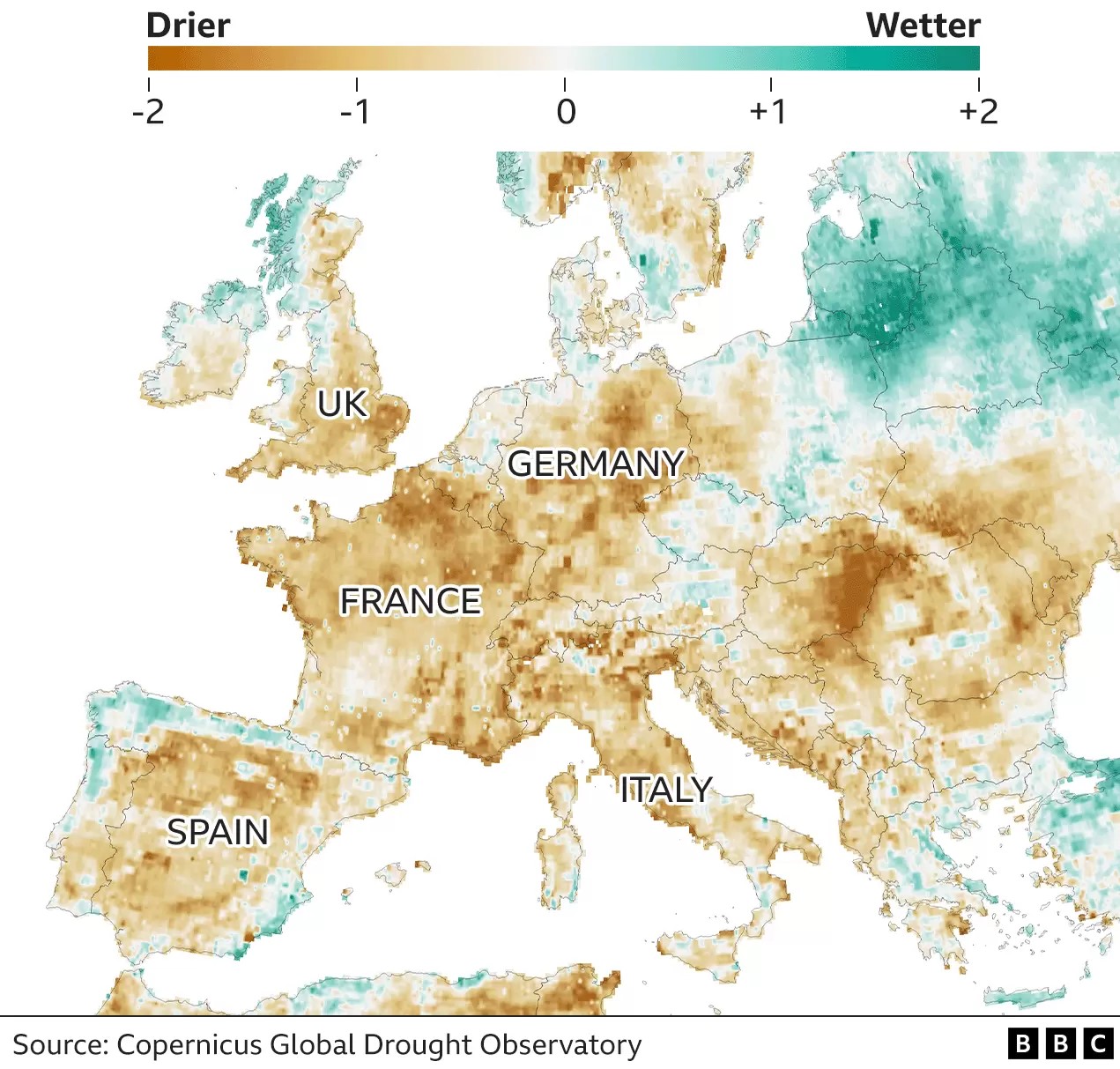
Figure 5.1. Copernicus Global Drought Observatory drought map based on soil moisture anomaly average from 1 June to 31 August. (Source: https://www.bbc.com/news/62751110)
The water and heat stress substantially reduced the yields of summer crops. The most affected crops were maize, soybean and sunflower. Not only the agricultural sector was affected, but also the supply of drinking water was reported as another big issue.
During the first decade of October 2022, the combined drought indicator based on the Standardized Precipitation Index (SPI), Soil Moisture Index (SMI) and Fraction of Absorbed Photosynthetic Active Radiation (fAPAR) shows that 19% of the regions across Europe were in warning conditions, particularly in Spain, France, Germany and the Netherlands and 23% of the continent was in the alert conditions, indicating a deficit in soil moisture and shortage of rainfall, mostly in western France, northern Germany, United Kingdom, Slovenia, Slovakia and Hungary (Figure 5.2).
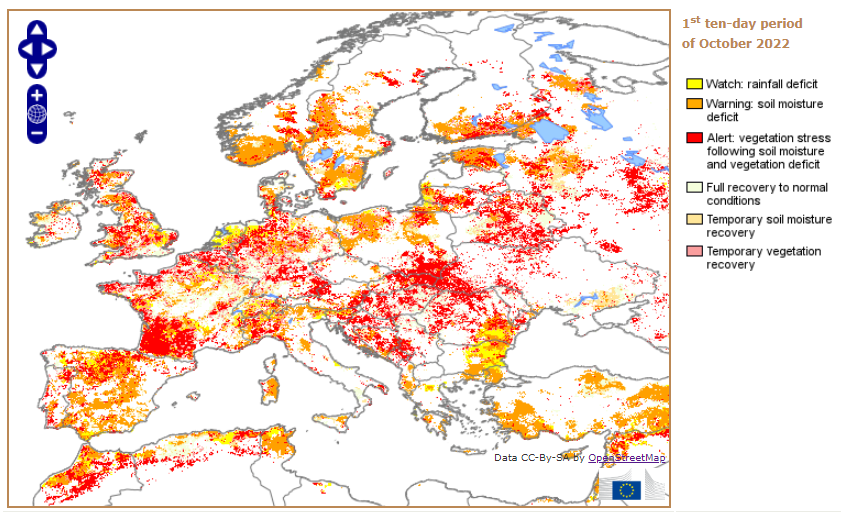
Figure 5.2. Combined drought indicator based on Standardized Precipitation Index (SPI), Soil Moisture Index (SMI) and Fraction of Absorbed Photosynthetic Active Radiation (fAPAR) during the first decade of October 2022
Source: https://edo.jrc.ec.europa.eu/edov2/php/index.php?id=1052
CHINA: Extreme heat and severe lack of rainfall led to a record-breaking drought that caused parts of the Yangtze River, Poyang Lake and Dongting Lake in China to dry up. This affected not only the hydropower (especially in Sichuan, which receives more than 80% of its energy from hydropower) and shipping routes but also the drinking water supply. The standardized Drought Severity map for the first decade of August (Figure 5.3) indicates severe to exceptional drought situations across China, especially in the provinces of Hunan, Hubei, Anhui, Sichuan, Shaanxi and Henan.
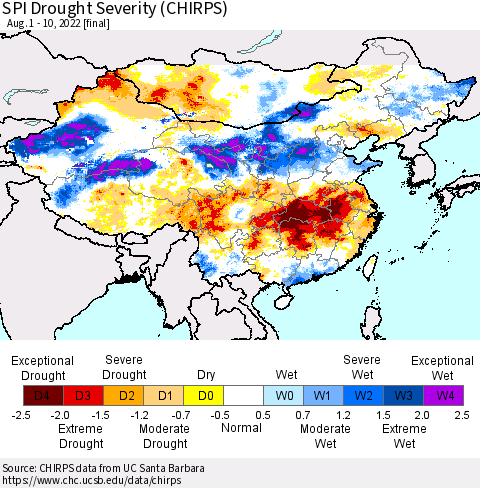
Figure 5.3. Standardized Drought Severity from August 1st to August 10th 2022 in China. (Source: Foreign Agriculture Services, US Department of Agriculture)
The heatwave eased in August, but severe drought along the Yangtze River and its tributaries continued in September. During this period, the late-season rice was in the booting stage.
UNITED STATES OF AMERICA: In the United States of America, the short-term droughts continued to expand in Ohio, Tennessee, and the central Mississippi Valleys along with parts of the Corn Belt. As the Mississippi river was at its lowest water levels in a decade, it closed off a vital channel to barge traffic at a crucial time of the year for the transport of crops from the nation's heartland. This is due to widespread drought across the Mississippi River basin and its tributaries (the Missouri, Ohio, Tennessee, and Arkansas-White-Red basins) (Figure 5.4).

Figure 5.4. Mississippi river drought
Source: https://www.esquire.com/news-politics/politics/a41806647/mississippi-river-drought/

Figure 5.5. US Drought monitoring map (October 25, 2022)
Source: https://droughtmonitor.unl.edu/Summary.aspx
According to the National Centers for Environmental Information, numerous drought impacts have occurred (Fig 5.5). These impacts include dry soils, low groundwater, dried-out ponds, low or dried-out streams, low or empty reservoirs (especially in the West), and stressed vegetation. In October, dozens of large wildfires were burning in the Pacific Northwest, and several in Oklahoma. According to the National Interagency Coordination Center, over 59,000 fires have burned over 7 million acres in the U.S. as of October 28. These are more than the 10-year average.
EAST AFRICA: Not only Europe, China and the USA were suffering from severe droughts. The rainy season in Eritrea, Ethiopia, South Sudan and Somalia finished in October. The drought monitoring map (Figure 5.6) indicates the situation in late October. Althought it shows relatively low levels of drought stress, the World Meteorological Organization forecasts high drought conditions for the October-December season. These conditions will worsen the crises that are affecting millions of people in the region. In addition to drought, the conflicts in the region have increased poverty levels and food insecurity, resulting in a weak capacity to cope with the drought crises. According to UN-OCHA, people in need of humanitarian help include 7 million in Ethiopia, 4 million in Kenya, and 5 million in South Sudan.
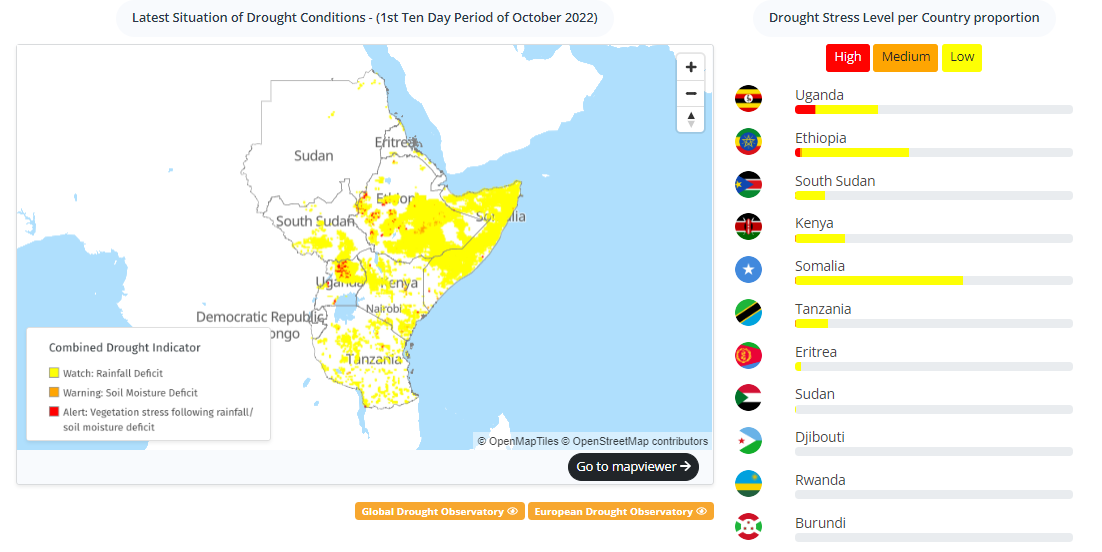
Figure 5.6. Combined Drought Indicator (CDI). Source: https://droughtwatch.icpac.net/
RECORD BURNING OF RAINFOREST IN BRAZIL: With the dry season in the Brazilian Amazon lasting from July through November, a high number of illegal fires had been started. According to the Brazilian Space Agency – INPE, on August 22nd, 2022, about 3358 fires were detected through satellite images in the Brazilian Amazon. This event was considered to be the highest number of recorded fires for any 24 hours since 2007. For the January to August period, the number of fires had increased by 16.7%, as compared to the same period of last year. Apart from storing large amounts of carbon, the Brazilian Amazon Rainforest plays a vital role in regulating and balancing regional and global climate, bringing rains to distant regions. According to the MapBioma – Monitor do Fogo project, a total of 15,203,570 hectares of forest were burned from January to October 2022. The most affected regions were Cerrado and Amazonia (Figure 5.7).

Figure 5.7. Burned area per month in Brazil
Source: https://plataforma.brasil.mapbiomas.org/monitor-do-fogo
3. Floods and Landslides
PAKISTAN: In Pakistan, the heavy monsoon rains caused flooding on about 10-12% of Pakistan's land. The province of Sindh was most hit. About 33 million people were affected and thousands of hectares of cropland, crops, livestock assets, critical agriculture infrastructure, and households have been destroyed. Following it, acute food security is expected to worsen in many parts of the country.
SUDAN: Reports show that by the first half of August, in 12 provinces, over 8000 houses were destroyed and over 20000 homes were damaged due to floods. In the same period, 52 deaths due to flooding were reported. This situation lasted until September and the number of people affected continued to rise. According to the Government's Humanitarian Aid Commission (HAC), during this period, in 16 of the 18 states, more than three hundred thousand people were affected and 24,860 houses were destroyed. The total number of people affected by the floods has exceeded the number of people affected in 2021 (about 314,500 people).
WEST AFRICA: Food insecurity is a serious, growing problem in Nigeria. In 2021 it was reported that 7 out of 10 Nigerians did not have enough to eat. This problem is worsened by annual flooding. The satellite-based flood analysis detected water in Nigeria using VIIRS between 13 to 17 October 2022 and it was compared to the week before (08 to 12 October 2022). The results from this analysis revealed that on the analyzed cloud-free areas (about 890,000 km2), approximately 3000 km2 of land was affected. (Figure 5.8).
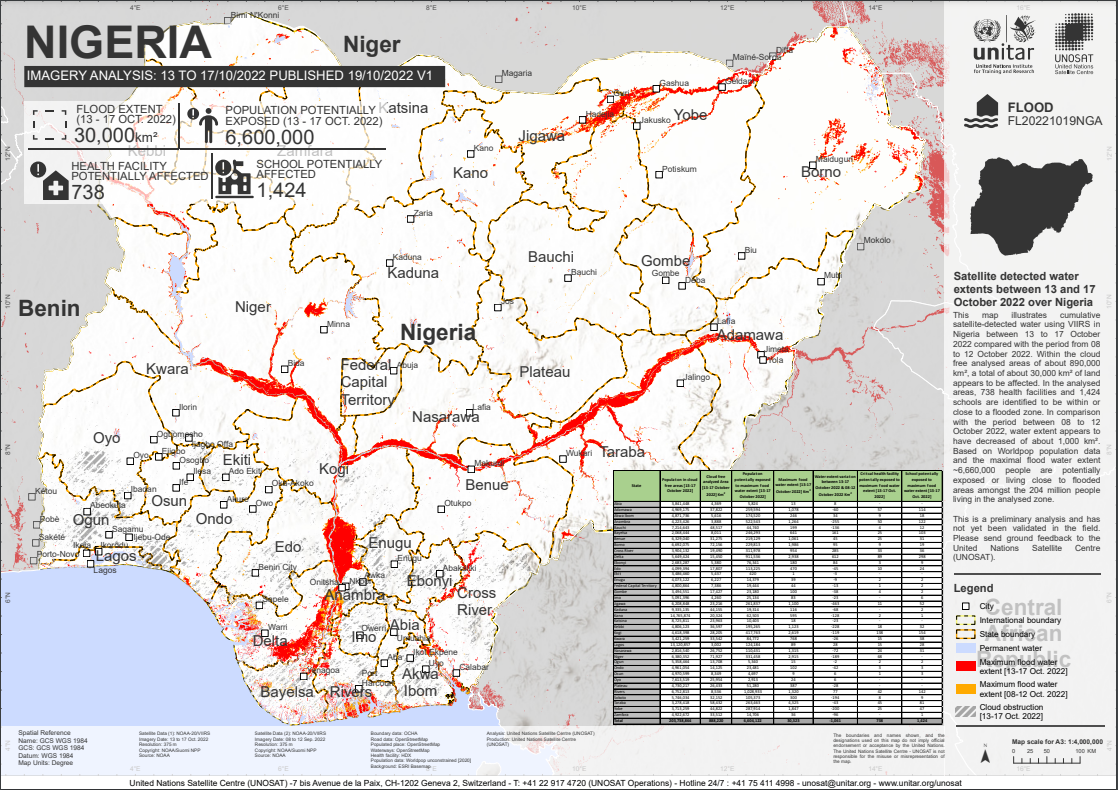
Figure 5.8. Cumulative satellite detected water in Nigeria
This event was considered one of the deadliest events recorded in the region and the worst event in Nigeria in over a decade, killing more than 600 people and displacing more than 1.5 million people as of October 2022. The damages from this event are also measured in terms of lost production area, in which more than 300,000 hectares of cropland were damaged. Other issues related to this flood event are concerns about the increased spread of diseases, and food and fuel supplies have also been disrupted. Food production levels in Nigeria are already below demand, the World Food Programme and the UN's Food and Agriculture Organization reported that Nigeria was among the six countries facing a high risk of catastrophic levels of hunger. To alleviate the impacts, The United Nations released a total of US$ 10.5 million from the Nigeria Humanitarian Fund (NHF) and the Central Emergency Response Fund (CERF) to provide assistance to people affected and left vulnerable by floods across Nigeria.
4. Desert Locust
Considered the most destructive migratory pest in the world, the Desert Locust (Schistocerca gregaria) situation was calm between July to October 2022, with some isolated cases of scattered immature solitarious adults locusts being reported in Mauritania, Niger, Sudan and Yemen. In addition, during August and September, few hopers were reported in some parts of northwest Mauritania and the red sea coastal plain of Yemen. Although the situation was calm, some control majors were undertaken in Egypt where about 20 ha were treated.
Sources:
https://www.bbc.com/news/62751110
https://edo.jrc.ec.europa.eu/documents/news/GDO-EDODroughtNews202208_Europe.pdf .
https://edo.jrc.ec.europa.eu/edov2/php/index.php?id=1052
https://edo.jrc.ec.europa.eu/edov2/php/index.php?id=1051
https://reliefweb.int/disaster/ff-2022-000274-irn
chrome-extension://efaidnbmnnnibpcajpcglclefindmkaj/https://www.fao.org/3/cc2205en/cc2205en.pdf
https://reliefweb.int/report/sudan/sudan-weekly-floods-round-no-08-26-september-2022
https://reliefweb.int/report/sudan/sudan-weekly-floods-round-no-09-17-october-2022
https://edo.jrc.ec.europa.eu/documents/news/GDODroughtNews202208_East_Africa.pdf
https://www.drought.gov/data-maps-tools/us-drought-monitor
https://droughtmonitor.unl.edu/Summary.aspx
https://www.ncdc.noaa.gov/sotc/drought/202210
https://www.bbc.com/news/av/world-africa-63262805
https://reliefweb.int/report/nigeria/united-nations-releases-us105-million-nigeria-floods-response
